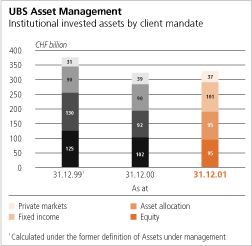Bar Graphs
Simple Bar Graph

Our Bar Graph Pack includes several great resources to teach about creating bar graphs. Print and display the example bar graph, word cards, and banner to provide visuals for your students about creating bar graphs. This resource addresses the following standards: CCSS Math. A bar graph, also known as a bar chart, is a graph that uses rectangular bars to represent different values to show comparisons among categories, such as the amount of rainfall that occurred during different months of a year, or the average salary in different states.
Here the Factory is our independent variable, since there is no unit of measurement for factories and no 'order' to the factories, the independent variable is nominal. The dependent variable is scalar, measured in defects/1,000 cars. Since the scalar dependent variable has a natural zero point (i.e., absolute or ratio), all of the bars are anchored to the horizontal axis, giving a common point of measurement.
Horizontal Bar Graph
Bar graphs can be shown with the dependent variable on the horizontal scale. This type of bar graph is typically referred to as a horizontal bar graph. Otherwise the layout is similar to the vertical bar graph. Note in the example above, that when you have well-defined zero point (ratio and absolute values) and both positive and negative values, you can place your vertical (independent variable) axis at the zero value of the dependent variable scale. The negative and positive bars are clearly differentiated from each other both in terms of the direction they point and their color.
Range Bar Graph

Range bar graphs represents the dependent variable as interval data. The bars rather than starting at a common zero point, begin at first dependent variable value for that particular bar. Just as with simple bar graphs, range bar graphs can be either horizontal or vertical. Notice in the horizontal example above, a reference line is used to indicate a common key dependent variable value.
Histogram
Histograms are similar to simple bar graphs except that each bar represents a range of independent variable values rather than just a single value. What makes this different from a regular bar graph is that each bar represents a summary of data rather than an independent value. For this type of graph, the dependent variable is almost always a scalar scale representing the count, or number, of how many of a sample fall within each range of the independent variable. In the example above, the sample is all the females in the U.S. The independent variable is age, which as been grouped into ranges of 5 years each. You should try and keep the ranges for each bar uniform (5 years in this case), with the exception possibly being the first and/or last range.
Example 1: A survey of students' favorite after-school activities was conducted at a school. The table below shows the results of this survey.
| Students' Favorite After-School Activities | |
| Activity | Number of Students |
| Play Sports | 45 |
| Talk on Phone | 53 |
| Visit With Friends | 99 |
| Earn Money | 44 |
| Chat Online | 66 |
| School Clubs | 22 |
| Watch TV | 37 |
Note that since the data in this table is not changing over time, a line graph would not be a good way to visually display this data. Each quantity listed in the table corresponds to a particular category. Accordingly, the data from the table above has been displayed in the bar graph below.

A bar graph is useful for comparing facts. The bars provide a visual display for comparing quantities in different categories.Bar graphs help us to see relationships quickly. Another name for a bar graph is a bar chart. Each part of a bar graph has a purpose.
| title | The title tells us what the graph is about. |
| labels | The labels tell us what kinds of facts are listed. |
| bars | The bars show the facts. |
| grid lines | Grid lines are used to create the scale. |
| categories | Each bar shows a quantity for a particular category. |
Now that we have identified the parts of a bar graph, we can answer some questions about the graph in Example 1.
| QUESTION | ANSWER | |
| 1. | What is the title of this bar graph? | Students' Favorite After-School Activities |
| 2. | What is the range of values on the (horizontal) scale? | 0 to 100 |
| 3. | How many categories are in the graph? | 7 |
| 4. | Which after-school activity do students like most? | Visit With Friends |
| 5. | Which after-school activity do students like least? | School Clubs |
| 6. | How many students like to talk on the phone? | 53 |
| 7. | How many students like to earn money? | 44 |
| 8. | Which two activities are liked almost equally? | Play Sports and Earn Money |
| 9. | List the categories in the graph from greatest to least. | Visit With Friends, Online, Talk on Phone, Play Sports, Earn Money, Watch TV, School Clubs. |
Example 2: Students in a class voted on their favorite fruit. Each student voted once. The bar graph below summarizes the data collected from the class vote.
Examples Of Bar Graphs
| QUESTION | ANSWER | |
| 1. | What is the range of values on the (horizontal) scale? | 0 to 5 |
| 2. | How many categories are in the graph? | 6 |
| 3. | Which fruit had the most votes? | Apples |
| 4. | Which fruit had the least votes? | Pears |
| 5. | How many students voted for bananas? | 3 |
| 6. | How many students voted for grapes? | 2 |
| 7. | Which two fruits had the same number of votes? | Oranges and Strawberries |
| 8. | List the categories in the graph from least to greatest. | Pears, Grapes, Bananas, Oranges, Strawberries, Apples. |

The bar graphs in Examples 1 and 2 each have horizontal bars. It is also possible to make a bar graph with vertical bars. You can see how this is done in Example 3 below.
Example 3: The amount of sugar in 7 different foods was measured as a percent The data is summarized in the bar graph below.
| QUESTION | ANSWER | |
| 1. | What is the title of this bar graph? | Amount of Sugar in Certain Foods |
| 2. | What is the range of values on the (vertical) scale? | 0 to 35 |
| 3. | How many categories are in the graph? | 7 |
| 4. | Which food had the highest percentage of sugar? | Chocolate Bar |
| 5. | Which food had the lowest percentage of sugar? | Ketchup |
| 6. | What percentage of sugar is in soda? | 28.9% |
| 7. | What is the difference in percentage of sugar between ice cream and crackers? | 21.4 - 11.8 = 9.6% |
Summary: A bar graph is useful for comparing facts. The bars provide a visual display for comparing quantities in different categories.Bar graphs help us to see relationships quickly. Bar graphs can have horizontal or vertical bars. Another name for a bar graph is a bar chart.
Exercises
Directions: Refer to the bar graph below to answer each question. For each exercise below, click once in the ANSWER BOX, type in your answer and then click ENTER. Your answer should be given as a word or as a whole number. After you click ENTER, a message will appear in the RESULTS BOX to indicate whether your answer is correct or incorrect. To start over, click CLEAR.
Students in Mrs. Glosser's class were surveyed about snacks and asked to choose the one snack food they liked most from a list. The bar graph below summarizes the data collected from this survey.
| 1. | Which snack was preferred most? |
Bar Graphs Maker
| 2. | Which snack was preferred by 2 students? |
| 3. | How many students preferred pretzels? |
| 4. | Which snack was preferred by 3 students? |
What Is A Bar Graphs
| 5. | According to the graph, what value corresponds to the number of students who preferred fruit and vegetables equally? |